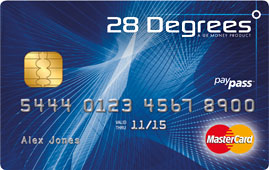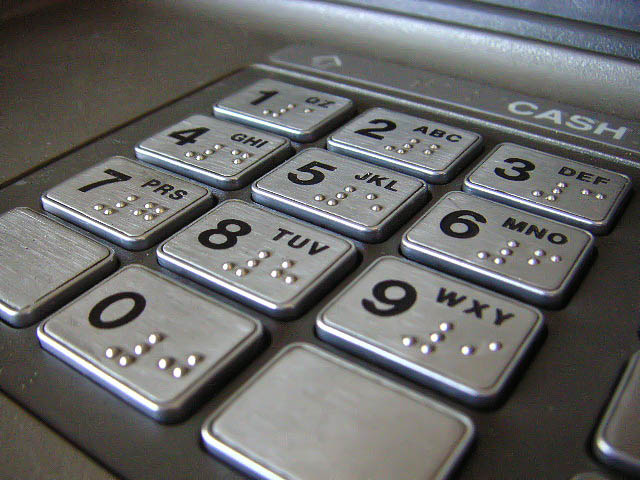Taking a trip overseas is one hell of a lot of fun. Buying clothes, gear and researching where you might go are some of the most exciting parts of the planning stage. And then there are the more difficult tasks like getting visas, saving money to travel and bidding farewell to the family. Another one of the difficult tasks is working out the best travel card option to get access to your money while overseas.
Some 15 years ago it was all about travellers cheques or hiding the cash in your sock. These days you can get money just like you do at home, from the ATM.
A short note before I get started, my knowledge is only from the Australian market so sorry if this doesn’t relate to you but hey all you travelling Australians be sure to read on.
When researching my trip 3 years ago I looked up the options for how I could get my money out abroad cheaply and in the easiest possible way. The options then looked like the following:
- Get a travel card
- Take cash and stuff it in your sock
- Get XYZ currency before you leave home
- Take your current Debit/Credit card and use that
Travel Cards
All the big banks offer some form of travel card and here are the links to just a few I found quickly, Nab Travel Card, Commonwealth Bank Travel Money Card & the ANZ Travel Card. You’ll also find a bunch of other providers all offering the same sort of cards as well, there is a big up-sell to get travellers to use these. They sound great right? at least they do until you click the fees page. You have the card fee, the transaction fee, the currency conversion fee, the inactivity fee…. (seriously they charge you if you don’t use the card). I thought these were cards to make life easier for travellers but in my mind they are all a complete rip off so please don’t get one.
Cash in the Sock Trick
This might be great for a week-long trip to Asia where there are money changers everywhere but if your planning a year-long stay or just a 3 month Europe backpacking trip then I doubt you’d get away with 10k stuffed in there. I tend to leave the country with around 20-30 Australian dollars that I can change at airports etc if need be to buy a drink or something to eat but that’s all.
Even if you did get your money overseas, how paranoid would you be staying at a hostel with that kind of money on you?
Get XYZ Currency Before You Leave
With this I’m talking about doing basically the same as above but converting it to Euros, Pounds, American Dollars etc before you leave home. Again great idea for a few days but long-term travel it’s hardly possible. You also stand to lose money if the exchange rate changes dramatically while away. Sure it may never be a big change but hey every dollar counts when on a budget.
Take Your Debit/Credit Card With You
This is one of the options I use all the time. It’s convenient as I can login to my online banking and easily see how much money is in my account. I’ve got the security of my bank that I know to look after me and to be honest the currency conversion fees and so on are far less than that I’d pay with a travel card.
While I can only speak for the parts of the world I’ve used my card (Europe/America) I’ve never once had a problem with it. One great tip for going down this route is you can add parents/friends you trust as authorised representatives on your account so if a card is stolen you can quickly call them to cancel your card. This saves you dealing with calling a bank overseas which can cut your stress levels after having had a card stolen or lost.
Bonus Option
 There is of course always a bonus option for those with a good credit record and are willing to signup for a new credit card. In all my research the only card that comes close to what I’d call a real travel card is the 28 Degrees Mastercard (previously known as the Wizard Clear Advantage Mastercard). It charges no fees, no currency conversions fees or withdrawal fees at all.
There is of course always a bonus option for those with a good credit record and are willing to signup for a new credit card. In all my research the only card that comes close to what I’d call a real travel card is the 28 Degrees Mastercard (previously known as the Wizard Clear Advantage Mastercard). It charges no fees, no currency conversions fees or withdrawal fees at all.
For travellers serious about making the most of their money this is the card for you.
The best way to use this card is to preload the card with some of your travel funds before heading off to travel. You then use this for all ATM withdrawals and purchases. With the card in credit you’ll not pay any interest if you forget to top it up unlike using it like a credit card that you pay off each month.
How Do I Do It?
For complete security while I’m travelling I use two of the above options. Mainly because if one card gets stolen or lost I want to have a backup solution. Thus I travel with my 28 Degrees Mastercard and my Visa/Mastercard from my bank at home.
The 28 Degrees card gets used for all of my day-to-day needs and I use my local bank cards for big purchases that I have linked to my frequent flyer account. Given all the travel I do its worth getting a little reward with little things like these so the small extra fees are worth it.
How do you get access to your money abroad? Love to hear if you have another option or if your from another country what you use.Photo Credit : redspotted


As of today Citibank is chargin 2.50% for foreign currency transacations and is changing to a Mastercard rather than Visa…
Does the 2.50% charge apply to using Citibank ATM for cash withdrawals in foreign countries as well?